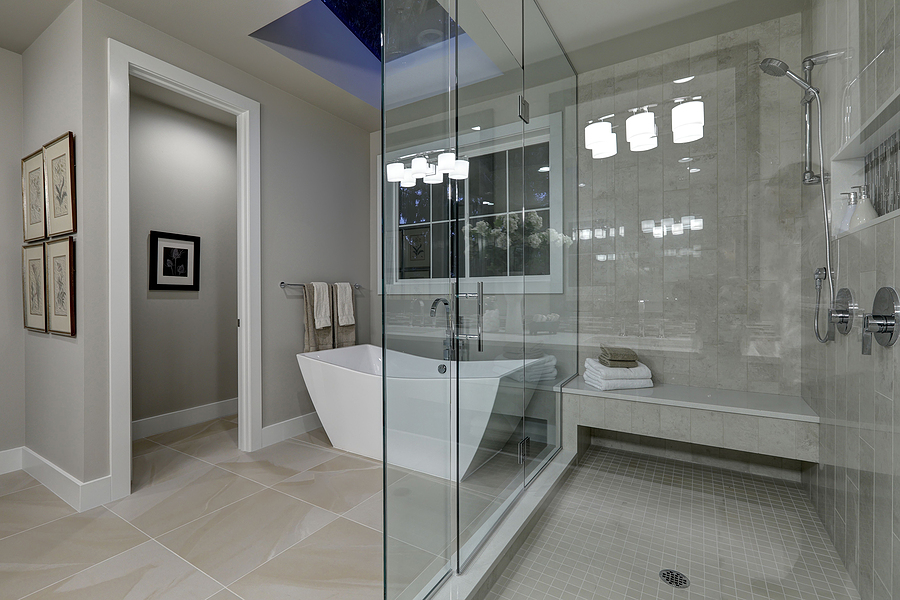
How Much Does Walk-In Shower Installation Cost?
From purchase to installation, are you interested in learning about the costs associated with walk-in showers? Get all the details you need in this ultimate guide from USA Shower And Bath.
Considering an upgrade to your bathroom? A walk-in shower may be an ideal solution for your bathroom remodel. These contemporary and stylish showers improve accessibility and safety, optimize space, and contribute an element of sophistication to your home, enhancing your renovation plans. This article will examine the different types of walk-in showers, their advantages, and the anticipated installation costs, including a cost breakdown of materials and labor. Furthermore, it will provide recommendations for managing expenses effectively, including considerations for materials, labor, and cost breakdown, maximizing your return on investment. Prepare to enhance your bathing experience significantly.
What is a Walk-In Shower?
A walk-in shower represents a contemporary solution for showering, providing easy access and a luxurious bathing experience while significantly enhancing the aesthetic appeal of a bathroom. This type of shower can range from a basic walk-in shower to a custom walk-in shower.
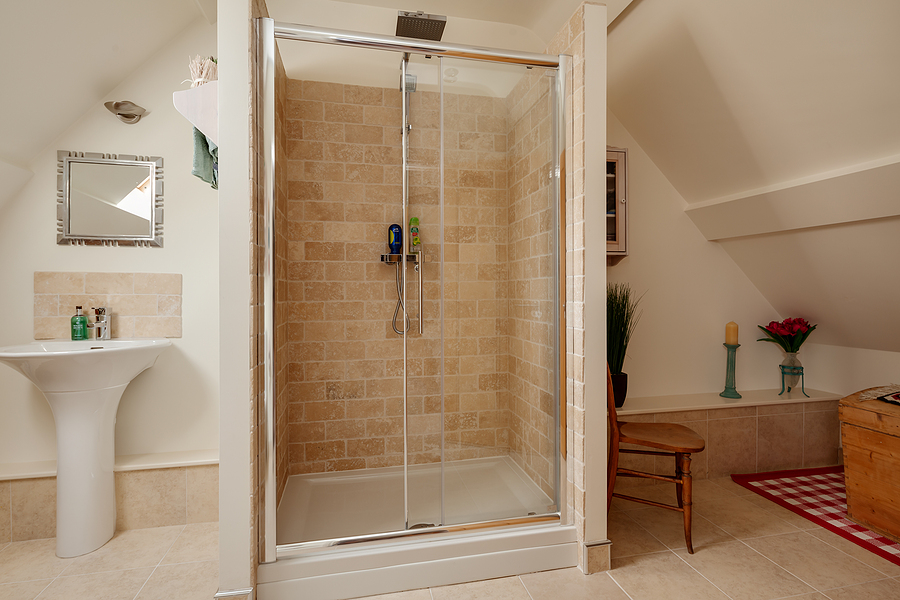
In contrast to traditional shower enclosures, walk-in showers feature a spacious design that eliminates the need for a threshold, thereby facilitating seamless entry and exit. This type of shower can be designed as a corner walk-in shower or a standalone walk-in shower.This type of shower can be customized in terms of size, location, and design, ranging from basic installations to bespoke features tailored to the specific preferences of homeowners.
As such, walk-in showers present an appealing option for those considering bathroom renovations, especially for homeowners in Tallahassee.

What are the Benefits of a Walk-In Shower?
Walk-in showers present a variety of benefits that address both functionality and aesthetics, making them an excellent option for homeowners seeking to improve their bathrooms. The installation cost varies depending on the design complexity and material selection.
A primary advantage is the accessibility features they offer, which can greatly assist individuals with mobility challenges, thereby ensuring a safer and more comfortable bathing experience. These features are especially beneficial in shower renovation projects.
Furthermore, their sleek and modern design enhances the overall aesthetic appeal of a bathroom while also optimizing space compared to traditional shower/tub combinations.
These benefits can be crucial in shower renovation projects, often justifying the initial investment in a shower remodel for many clients. Considering the installation cost, it is important to weigh the benefits of a mid-range walk-in shower versus a high-end, custom walk-in shower.
Accessibility
Accessibility is a key characteristic of walk-in showers, making them an ideal choice for individuals with mobility challenges or those who require easier access to bathing facilities. This can often justify the higher installation cost associated with including such accessibility features.
These meticulously designed spaces can significantly enhance safety and comfort during daily routines, especially when designed with custom features such as grab bars and built-in benches.The incorporation of features such as grab bars provides users with a secure grip, thereby reducing the risk of slips and falls. Additionally, built-in benches offer a practical solution for resting while bathing, which can be particularly advantageous for seniors or individuals with disabilities.
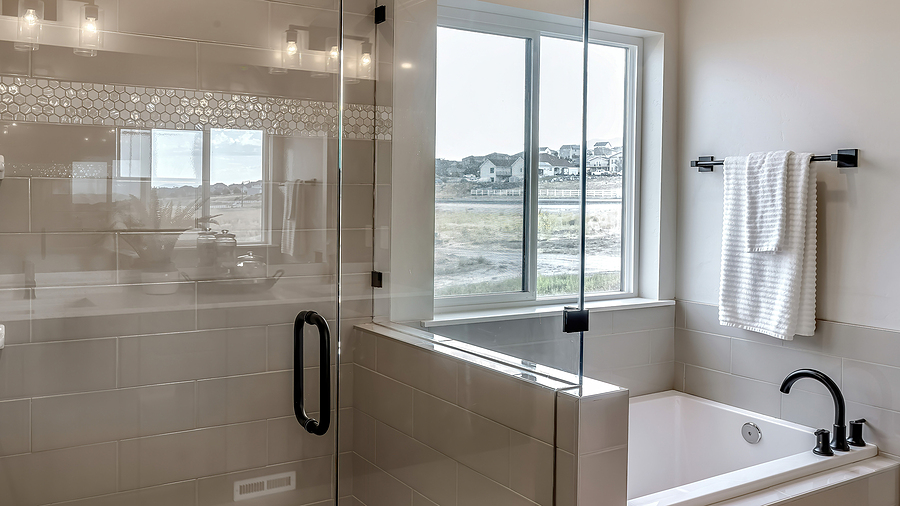
Curbless entries eliminate the obstacles that traditional bathtubs or showers present, allowing for a seamless transition into the bathing area for users of all abilities.
The careful integration of these accessibility features during the installation process not only fulfills the practical needs of homeowners but also improves their overall quality of life by creating a safer and more welcoming environment. This is particularly important for Tallahassee homeowners looking to improve their bathroom spaces.
Safety
Safety is a critical factor to consider when selecting a walk-in shower, as these installations often incorporate various features specifically designed to mitigate the risks of slips and falls.
Ensuring a safe bathroom environment is of utmost importance, particularly in an area where water and slippery surfaces are present. Proper waterproofing and slip-resistant tiles are crucial elements to consider during the installation process.Walk-in showers typically include slip-resistant tiles, which provide enhanced traction compared to standard flooring materials, thereby significantly reducing the likelihood of accidents.
The incorporation of grab bars allows users to maintain balance and support when navigating the shower area, thereby adding another layer of security. Additionally, low-threshold designs facilitate easy access for individuals with mobility challenges, promoting independence and confidence during the showering process.
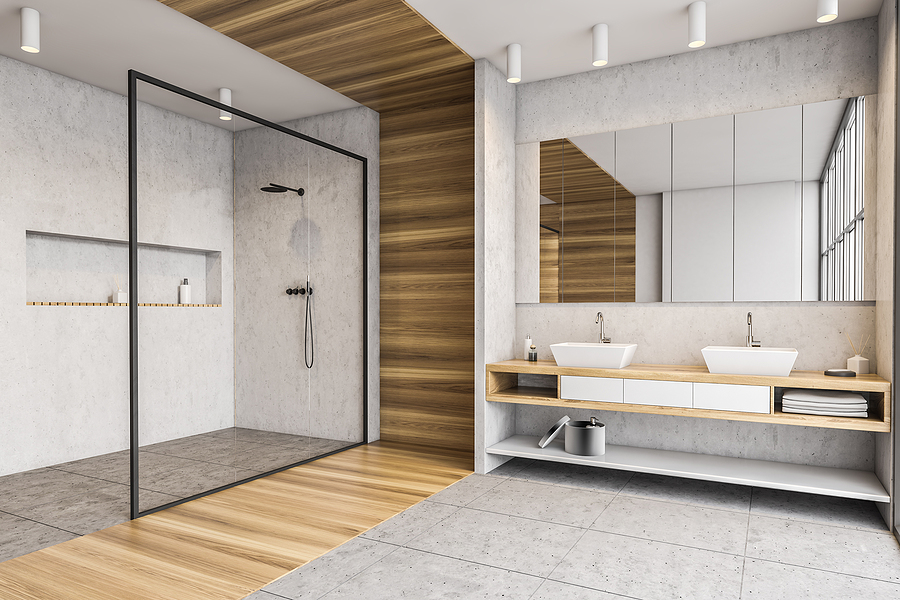
It is essential to prioritize these safety features throughout the installation process, as they collectively contribute to a safer overall bathroom experience. Considering the average cost of incorporating these features, it’s important to budget accordingly for additional elements such as grab bars and slip-resistant tiles.
Space-saving
Walk-in showers represent a highly effective space-saving solution, particularly in smaller bathrooms where maximizing square footage is of utmost importance. The installation of a corner walk-in shower can further optimize the available space.
By eliminating the need for bulky bathtubs or traditional shower enclosures, these streamlined alternatives provide greater flexibility in design. Homeowners can choose from various design options including a prefab walk-in shower or a custom-built solution.The versatility of walk-in showers give the power tos homeowners to create a bathroom that is both expansive and inviting. Key considerations include:
- Shower Size: Selecting a larger, open design can create an illusion of spaciousness and impact the overall cost.
- Layout: Positioning the shower in a corner or along a wall can effectively free up valuable floor space.
- Materials: Utilizing transparent glass panels not only enhances safety but also fosters a brighter, more open atmosphere, affecting the shower door costs.
With careful placement and design choices, walk-in showers can significantly enhance small bathroom areas, rendering them both functional and aesthetically pleasing. The incorporation of custom features can further enhance the luxurious designs.
Modern and Stylish Look
The contemporary and stylish aesthetic of a walk-in shower significantly enhances the visual appeal of any bathroom, making it a preferred option for homeowners seeking to upgrade their spaces.
With an expanding array of design choices available, these showers not only improve the overall decor but also impart a sense of luxury. Homeowners can also consider high-end materials such as marble or natural stone for a more luxurious look.Homeowners can select from a variety of glass enclosures that foster an open and airy environment, allowing natural light to permeate the area. Distinctive tile patterns, such as geometric shapes or artisanal mosaics, can create a striking visual contrast and add a personal touch. Choosing premium materials, such as natural stone or high-quality ceramic, strikes an ideal balance between durability and elegance.
- It is advisable to consider custom features, such as built-in shelving or benches, for added comfort.
- Rainfall showerheads and ambient lighting can further enhance the overall spa-like experience.
The design flexibility of walk-in showers ensures that each installation can be uniquely customized to reflect individual preferences and lifestyle choices, transforming a standard bathing area into a remarkable statement piece. Custom walk-in showers often require detailed planning, including obtaining a building permit and considering the plumbing costs.
What are the Different Types of Walk-In Showers?
Walk-in showers are available in a variety of designs that accommodate diverse preferences and bathroom layouts, enabling homeowners to choose the most suitable option for their specific requirements. Whether you are considering a standard prefab walk-in shower or a more intricate custom walk-in shower, understanding the associated costs and benefits is crucial.
Among the most favored types are curbless walk-in showers, which facilitate seamless entry and enhanced accessibility. Additionally, low-threshold walk-in showers are designed to provide a modest step up for easier access. Roll-in walk-in showers are particularly advantageous for wheelchair users, while corner walk-in showers are crafted to optimize space in smaller bathrooms.
Each type presents a distinct solution for shower installation, catering to a range of needs and preferences.
Curbless Walk-In Shower
Curbless walk-in showers often require detailed planning, including waterproofing costs and ensuring adequate drainage.
Curbless walk-in showers are constructed without a threshold, facilitating easy entry and exit, which significantly enhances accessibility for individuals of all ages.
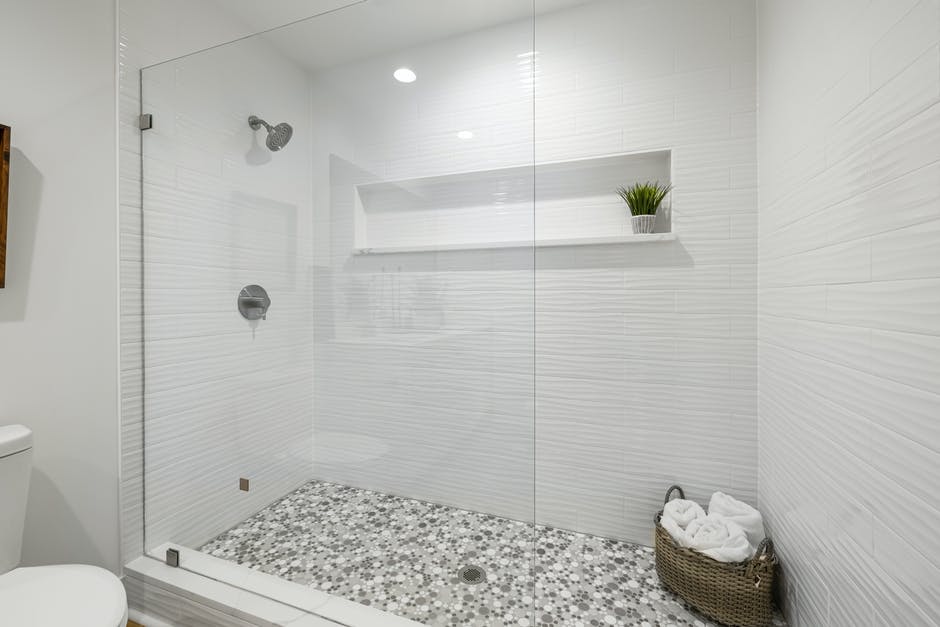
This seamless design not only promotes movement for those with limited mobility but also creates a safer environment by minimizing the risk of slips and falls. Accessibility is paramount in contemporary bathroom design, and curbless showers are especially beneficial for individuals who may depend on mobility aids such as walkers or wheelchairs.
Key advantages include:
- The absence of steps, which allows for effortless transitions from a wheelchair.
- An open layout that can accommodate a shower bench, providing users the option to sit comfortably when necessary.
- The ability to seamlessly integrate additional features, such as grab bars, to enhance support.
When considering installation, it is essential to ensure proper drainage and an appropriate slope in the floor to prevent water pooling outside the designated shower area. Thoughtful design elements not only improve functionality but also contribute to a stylish bathroom aesthetic, making the walk-in shower a versatile choice for all users.
Low-Threshold Walk-In Shower
Low-threshold walk-in showers are designed with a minimal barrier that facilitates easy access while providing a measure of safety to prevent water from spilling onto the floor. Considering the overall project cost, integrating features such as a shower base and proper tiling is essential.
This innovative design not only promotes independence for individuals with mobility challenges but also enhances the overall aesthetic of the bathroom space. The integration of these showers can typically be accomplished with minimal disruption to existing plumbing, often necessitating only slight modifications to the current layout.
Homeowners can create a serene and secure bathing environment by implementing features such as slip-resistant flooring, handrails, and built-in benches. Consequently, the emphasis on functionality does not diminish the visual appeal, allowing for a seamless integration with contemporary design themes.
Installing low-threshold walk-in showers can transform a standard bathing area into a stylish and user-friendly oasis, catering to the diverse needs of users while ensuring that safety remains a priority in the design.
Roll-In Walk-In Shower
Roll-in walk-in showers are specifically engineered for wheelchair access, featuring a spacious design that allows individuals to enter without encountering any barriers.
These innovative bathing solutions not only promote independence but also ensure a safe and comfortable experience for all individuals, regardless of their mobility challenges. With their low-threshold entry, they effectively eliminate the risk of tripping, making them a practical choice for those who require assistance.
Proper planning and installation are essential, as these showers must comply with the Americans with Disabilities Act (ADA) to provide maximum accessibility, especially for those with mobility issues.
Key features include:
- Spacious interiors that accommodate grab bars and shower benches.
- Non-slip flooring that enhances safety during use.
- Adjustable-height showerheads that cater to individual needs.
By emphasizing these features, it is possible to create a bathroom environment that seamlessly combines functionality with style, ensuring the design meets the diverse needs of all users, including those considering remodeling plans.
Corner Walk-In Shower
Corner walk-in showers represent an optimal solution for maximizing space in smaller bathrooms by effectively utilizing often underused corners to establish a functional and aesthetically pleasing shower area.
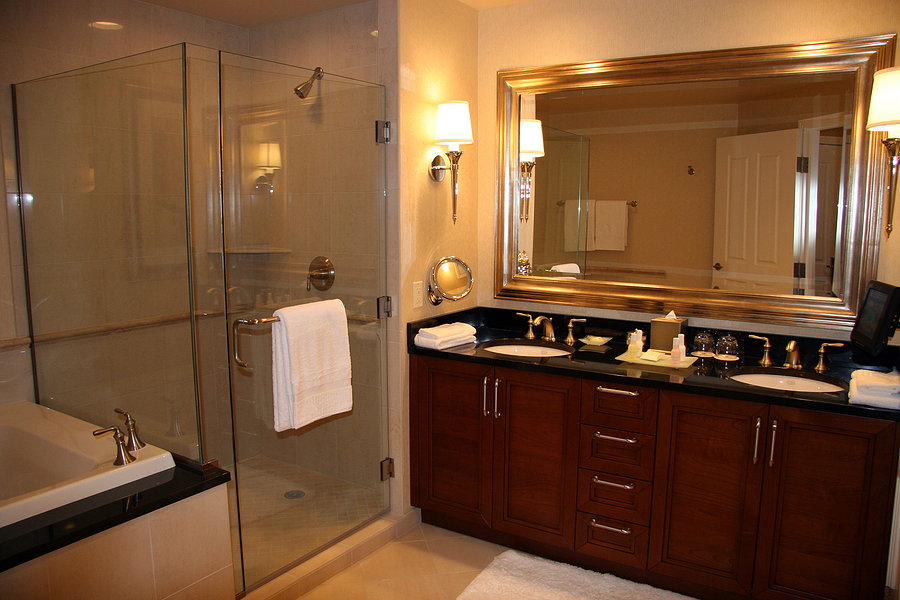
By choosing this design, individuals can not only free up valuable floor space but also enhance the overall visual appeal of the bathroom. These showers provide a sleek, modern aesthetic that complements a variety of decor styles, contributing to a more open and airy ambiance.
To effectively incorporate a corner walk-in shower into a bathroom remodel, consider the following recommendations:
- Select clear glass panels to create an illusion of space and minimize visual barriers, particularly in a niche shower design.
- Incorporate built-in shelves or niches within the shower area to reduce clutter and maintain an organized appearance.
- Choose tiles or finishes that match or harmonize with the existing bathroom design to achieve a cohesive look.
Utilizing the corners of a room not only demonstrates creativity but also transforms a cramped bathroom into a functional oasis.
What is the Cost of Installing a Walk-In Shower?
The cost of installing a walk-in shower can vary considerably based on several factors, including the type of shower, selected materials, and the complexity of the installation process, such as conversion costs and labor rates.
Homeowners should anticipate budgeting for installation costs that encompass not only materials and labor but also any plumbing and waterproofing expenses related to the project.
The average cost can range from basic installations to more luxurious designs that feature high-end materials and custom elements. Thus, it is essential to comprehend the various components that contribute to the overall expense of the shower remodel.
Materials Cost
The cost of materials is a significant factor in the overall pricing of a walk-in shower installation, as the selection of materials can profoundly affect both the budget and aesthetic appeal.
When evaluating materials for a walk-in shower, each option presents its distinct advantages and disadvantages, accommodating a variety of preferences and financial considerations. For example, fiberglass showers are a cost-effective choice, often favored for their lightweight construction and ease of installation; however, they may fall short in providing the luxurious finish that some homeowners seek.
On the other hand, marble introduces an element of elegance with its natural beauty, yet it carries a higher price point and necessitates more maintenance.
- Porcelain: Renowned for its durability and low maintenance, porcelain tiles are available in an array of designs, making them a versatile option.
- Acrylic: As another economical choice, acrylic showers offer seamless installation and ease of cleaning, although the range of style options may be somewhat limited.
Ultimately, the choice of materials not only influences the costs associated with tiles and maintenance but also plays a crucial role in shaping the overall design of the bathroom, ensuring that every detail aligns with the homeowner’s vision.
Labor Cost in Tallahassee
Labor cost represents a critical aspect of the overall installation expense for a walk-in shower, as the engagement of skilled contractors can substantially affect both the quality and efficiency of the installation process.
Installation labor costs encompass various elements, making it imperative for homeowners to comprehend their financial implications. Typically, labor rates may range from $50 to $150 per hour, contingent upon the contractor’s experience and geographical location.
- Urban areas generally exhibit higher rates due to increased demand.
- Conversely, rural regions often provide more budget-friendly alternatives.
Engaging a reputable contractor not only ensures compliance with building codes but also guarantees a high standard of craftsmanship. Selecting experienced professionals can mitigate the risk of costly errors and rework, thereby rendering the initial investment beneficial.
Additionally, factors such as project complexity and timeline can further affect total labor costs, underscoring the importance of meticulous planning and budgeting.
Additional Features Cost
The cost of additional features can significantly influence the total investment in a walk-in shower, as homeowners may desire to incorporate elements such as custom features, various shower door options, and enhanced accessibility features.
When evaluating the overall cost of a remodel, it is essential to acknowledge that the inclusion of unique design elements can have a substantial financial impact. For example, custom enclosures made from high-quality materials can range from $1,200 to $3,500, depending on the complexity and materials selected. Likewise, premium glass shower doors, which not only enhance aesthetic appeal but also ensure durability, can range from $600 to $2,000. Features that enhance accessibility, such as grab bars, benches, and curbless entries, are increasingly favored and may add an additional $300 to $1,500 to the overall project budget.
- Custom Enclosures: $1,200 – $3,500
- Shower Doors: $600 – $2,000
- Accessibility Features: $300 – $1,500
These additions warrant careful consideration, as they not only contribute to comfort and luxury but also address practical needs, thereby making the investment more worthwhile.
What Factors Affect the Cost of Walk-In Shower Installation?
Several factors can significantly influence the cost of walk-in shower installation, impacting both the initial budget and the final project expense.
The size of the shower is a primary consideration, as larger designs generally lead to increased installation costs due to higher material and labor demands. Furthermore, the choice of materials plays a critical role in determining the overall expenditure, with premium options typically resulting in elevated prices.
The complexity of the installation, which may include distinctive designs or additional features, can also contribute to substantial variations in cost. Therefore, it is essential for homeowners to carefully consider these factors when planning their renovation.

Size of the Shower
The dimensions of the shower are a critical factor that directly influences the installation cost of a walk-in shower, as larger units necessitate additional materials and labor, impacting the overall shower remodel cost.
When considering a walk-in shower, the available space will not only determine the dimensions but also affect the selection of materials used for construction and the complexity of the installation process. Smaller showers can facilitate more efficient layouts, promoting the use of innovative designs that optimize space while effectively addressing user requirements. For example:
- Opting for compact fixtures, such as corner sinks and space-saving shelving, can enhance overall functionality.
- Employing glass doors instead of heavy curtains creates an open atmosphere without compromising privacy.
- Choosing lighter materials can help reduce labor costs associated with the installation.
A smaller footprint enables a concentrated investment in high-quality components, ensuring both durability and aesthetic appeal. In contrast, larger spaces often require a more comprehensive design approach, which is likely to increase overall expenses.
Materials Used
The choice of materials utilized in a walk-in shower is a critical factor that influences the overall cost, as different materials vary in price points and aesthetic qualities.
A diverse array of options is available, each offering distinct advantages and styles that cater to various design preferences, whether you’re considering porcelain or fiberglass materials.
- Fiberglass: This material is often preferred for its lightweight and cost-effective properties, typically ranging from $40 to $200 per square foot. Its ease of installation and maintenance makes it an ideal choice for budget-conscious renovations.
- Marble: For those desiring a sense of luxury, marble provides a timeless elegance; however, it tends to be more expensive, with costs ranging between $100 and $200 per square foot. The natural patterns inherent in marble contribute character to any bathroom setting.
- Tiles: The versatility of tiles is particularly advantageous, as they are available in a variety of materials, sizes, and colors. Depending on the type, costs can range from $1 to $20 per square foot, facilitating creative combinations that enhance the overall design.
By thoughtfully evaluating these options, Tallahassee homeowners can create a visually appealing and functional walk-in shower that aligns with their budget while reflecting their personal style.
Complexity of Installation
The complexity of installation is a critical factor in determining the overall cost of a walk-in shower, as intricate designs necessitate a greater level of skilled labor and time commitment.
Projects that feature various elements, such as custom tile work, built-in seating, and advanced plumbing layouts, often require a higher degree of expertise and experience, thereby significantly increasing labor costs, including tile costs. Engaging experienced contractors is essential to ensure that the installation is performed to the highest standards, thereby mitigating the risk of costly errors.
For example, a walk-in shower designed with multiple showerheads and an elaborate mosaic tile pattern will certainly demand a team with specialized skills in those areas.
Complex installations may involve:
- Curved glass doors
- Heated flooring systems
- Customizable rainfall showerheads
These complexities contribute to elevated labor costs due to the additional time and expertise required.
Ultimately, investing in skilled professionals not only streamlines the installation process but also enhances the overall functionality and aesthetic appeal of the shower design.
Additional Features
Incorporating additional features into a walk-in shower can significantly enhance both functionality and aesthetic appeal, although these additions also contribute to the overall project cost.
Homeowners seeking to elevate their shower experience often explore a variety of options that not only enhance practicality but also reflect their personal style in the bathroom. Features such as custom shower doors provide a seamless combination of elegance and security; these doors can be tailored to fit specific dimensions and styles, ensuring a perfect alignment with the bathroom’s overall design.
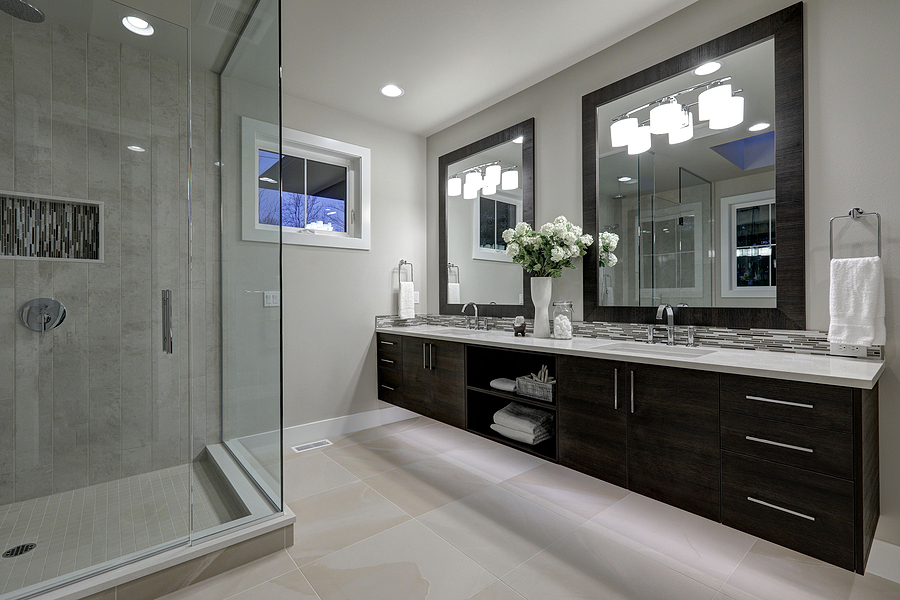
Furthermore, built-in seating offers convenience and comfort, particularly for individuals who may require support or simply desire a place to relax.
The inclusion of unique decorative elements, such as tile mosaics or ambient lighting, can transform a standard shower into a luxurious retreat. It is essential to recognize that each of these enhancements may increase the overall remodeling cost, and understanding the financial implications of such additions is crucial for homeowners planning a budget-conscious renovation.
What is the Average Cost of Walk-In Shower Installation in Tallahassee?
The average cost of walk-in shower installation can vary significantly based on multiple factors, with typical project costs ranging from a few thousand dollars to well over ten thousand dollars. This variation is largely dependent on the materials selected and the complexity of the design.
Homeowners should take into account not only the costs of materials and labor but also any additional features when determining the total cost of the shower remodel, as these elements can greatly impact the overall budget.
Gaining an understanding of the average cost range can aid homeowners in making informed decisions during their bathroom renovation process, considering factors such as renovation costs and bathroom demolition.
What are Some Tips for Reducing Walk-In Shower Installation Cost?
Reducing the cost of walk-in shower installation can be accomplished through a variety of strategies, enabling homeowners to design their ideal bathrooms while remaining within budgetary constraints.
One of the most effective methods for achieving savings is to select cost-effective materials that maintain both aesthetic appeal and functionality.
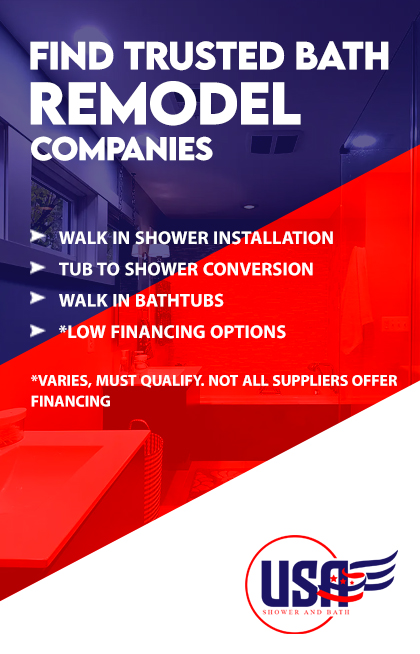
Furthermore, exploring DIY installation options, such as steam shower or electric shower installations, can substantially reduce labor costs, assuming homeowners possess the requisite skills and confidence.
Finally, engaging reputable contractors who provide competitive pricing can facilitate a balance between high-quality workmanship and financial savings.
Choose Simple Designs
Selecting straightforward designs for walk-in showers can significantly reduce overall installation costs while still providing a stylish and functional environment.
Opting for minimalist designs offers a blend of practicality and elegance, enabling homeowners to create impressive bathrooms without the challenges associated with excessive renovations. Simplicity in design not only streamlines the installation process but also minimizes the materials required, resulting in both cost savings and a reduced environmental impact.
Homeowners often discover that by concentrating on fewer components, they can choose higher-quality materials that enhance durability and visual appeal. The use of clean lines and neutral color palettes fosters a sense of tranquility and openness while contributing to a modern aesthetic that aligns seamlessly with contemporary living spaces.
- Reduced clutter facilitates easier maintenance.
- Simplified designs can create an illusion of more space.
- Timeless designs can seamlessly work together with various decor styles.
Ultimately, embracing minimalism can lead to a harmonious and inviting bathroom environment.
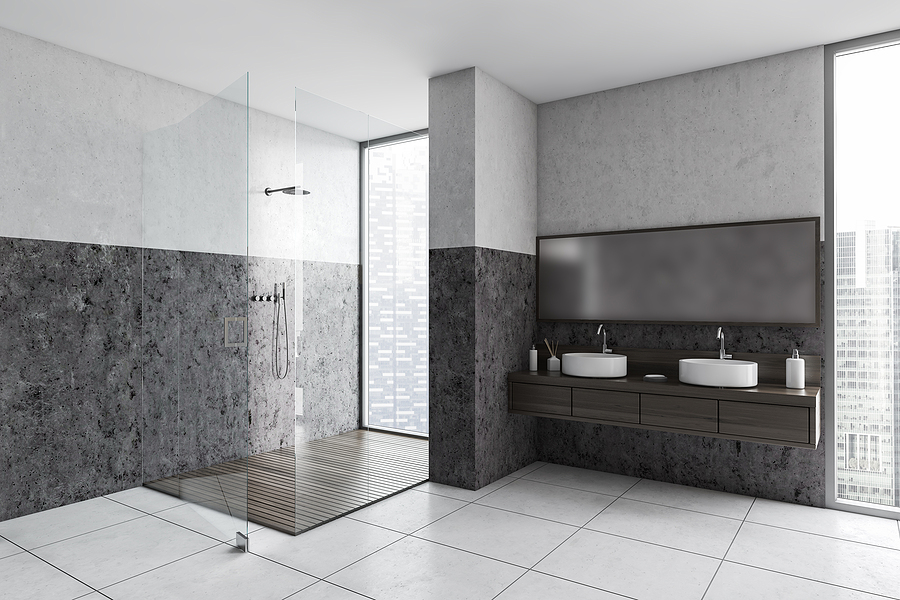
Opt for Affordable Materials with McManus Kitchen and Bath
Choosing affordable materials for a walk-in shower, including options like shower screens, can significantly influence the overall project cost while ensuring that quality and style are preserved.
Selecting various budget-friendly alternatives enables homeowners to achieve a luxurious appearance without exceeding their financial limits. Among the suitable materials, fiberglass and acrylic emerge as exceptional options, offering both durability and aesthetic appeal. Clients can elevate their spaces by exploring alternatives that replicate high-end finishes, such as faux tile designs or sleek minimalist styles.
The following materials warrant consideration:
- Fiberglass: Renowned for its lightweight characteristics and resistance to mold, this material serves as an ideal low-maintenance solution.
- Acrylic: Available in a variety of colors and textures, it can be tailored to create a custom look that rivals traditional tile.
- Composite materials: By integrating the advantages of multiple substances, these materials frequently deliver superior aesthetics and functionality.
Employing innovative design techniques can further enhance the visual appeal, ensuring that the walk-in shower remains a stunning focal point within the bathroom.
Hire a Reputable Contractor
Hiring a reputable contractor can significantly impact the overall installation cost of a walk-in shower, ensuring high-quality workmanship while adhering to the established budget.
A comprehensive vetting process for contractors is essential to avoid pitfalls that may derail a project. Homeowners should prioritize reviewing past work and references, as this provides valuable insight into the contractor’s reliability and craftsmanship.
To make an informed decision, it is advisable to gather multiple quotes from various professionals, allowing for a balanced comparison not only of costs but also of the services offered. When evaluating these estimates, homeowners should consider the following factors:
- Experience and expertise in shower installations
- Quality of materials proposed for use
- Timeline for project completion
By investing time in this due diligence, homeowners can ensure the selection of a contractor who not only meets their budgetary constraints but also adheres to high standards of work, ultimately avoiding costly mistakes that may result from hasty decisions.
Consider DIY Options
Considering DIY options for walk-in shower installation can yield substantial labor savings, give the power toing homeowners to take command of their renovation projects.
Embarking on this endeavor not only allows individuals to create a space customized to their preferences but also enhances their skills in home improvement. While undertaking a walk-in shower installation can be a fulfilling experience, it is essential to evaluate the potential benefits and challenges associated with this task.
Below are some key considerations:
- Benefits: Flexibility in design choices and significant savings on professional fees.
- Challenges: The necessity for precise measurements, potential plumbing complexities, and the need to ensure proper waterproofing.
To execute this project effectively, homeowners should gather essential tools, including a tile cutter, wrenches, and a caulking gun. Gaining a fundamental understanding of plumbing can significantly enhance the likelihood of success.
Additionally, utilizing online resources such as video tutorials and forums can provide invaluable guidance, facilitating a smoother and more rewarding process.
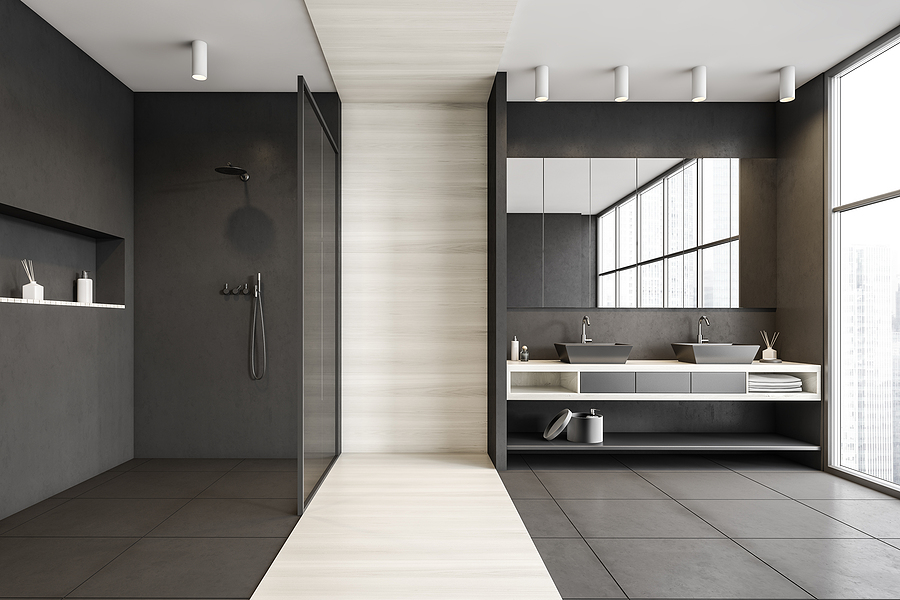
What is the Return on Investment for Walk-In Shower Installation?
The return on investment (ROI) for walk-in shower installation can be significant for Tallahassee homeowners, as these renovations often enhance the value of a home and increase its appeal to prospective buyers, especially in a real estate market that favors modern amenities.
Real estate experts estimate that a well-executed bathroom renovation, which includes the installation of a walk-in shower, can yield an ROI of over 70%. This figure underscores the increasing demand among homebuyers for contemporary bathroom designs that combine functionality with aesthetic appeal. A recent study indicated that more than 60% of buyers prioritize updated bathrooms when searching for a home, making this feature a prudent investment for homeowners intending to sell.
Statistics indicate that homes equipped with modern bathroom amenities sell for an average of 5-10% more than those lacking such features. Additionally, a case study conducted by a national home improvement company demonstrated that homeowners who installed walk-in showers experienced heightened interest in their properties and achieved faster sale times.
These factors clearly illustrate how a relatively simple upgrade can significantly enhance both the physical space and the overall marketability of a home.
Frequently Asked Questions
What is the average cost for Walk-In Shower installation?
The average cost for Walk-In Shower installation is around $3,000 to $6,000. However, the cost can vary depending on factors such as the size of the shower, materials used, and any additional features or customization.
What are the main factors that affect the cost of Walk-In Shower installation?
The main factors that affect the cost of Walk-In Shower installation include the size and complexity of the shower, the materials used (such as tile, glass, or acrylic), any additional features like grab bars or built-in seating, and the cost of labor in your area.
Is it more expensive to install a Walk-In Shower compared to a traditional bathtub?
In general, Walk-In Shower installation can cost more than installing a traditional bathtub due to the additional features and customization options. However, it is important to consider the long-term benefits of a Walk-In Shower, such as increased accessibility and potential savings on water and energy bills.
Are there any other costs to consider besides the installation itself?
Yes, there may be additional costs to consider such as demolition and removal of old fixtures, plumbing and electrical work, and any necessary repairs or upgrades to the bathroom walls and floors. The shower location can also affect costs. It is best to discuss these potential costs with your contractor before starting the installation process.
Can I save money by installing a Walk-In Shower myself?
While DIY installation may seem like a cost-effective option, it is not recommended for Walk-In Showers. These installations require specific knowledge and skills, and any mistakes can end up costing more in the long run. It is best to hire a professional contractor like McManus Kitchen and Bath for proper installation and to ensure safety and durability.
Are there any potential cost-saving options for Walk-In Shower installation?
Yes, there are a few potential ways to save on Walk-In Shower installation costs. These include using less expensive materials, opting for a simpler design without additional features, and getting multiple quotes from different contractors to compare prices. You may also be able to save on labor costs by completing some of the prep work, such as demolition, yourself. Consider consulting McManus Kitchen and Bath in Tallahassee for expert advice.
